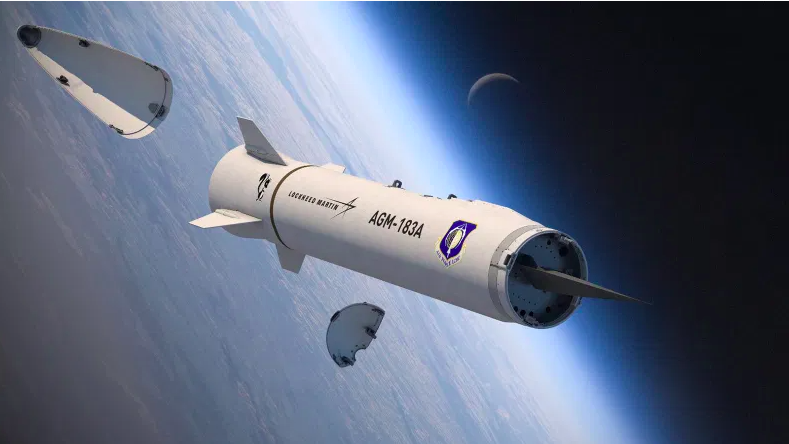
AGM-183A Air-launched Rapid Response Weapon (ARRW) (Lockheed Martin graphic)
WASHINGTON — The Pentagon may get an ARRW in its quiver after all.
In testimony before the House Armed Services Committee Thursday, Air Force Secretary Frank Kendall said the service was waiting on the conclusion of all-up-round tests for the hypersonic Air-launched Rapid Response Weapon (ARRW) before officials make a procurement decision — roughly one month after acquisition chief Andrew Hunter seemed to tell lawmakers in written testimony that the service would not go on to buy it once its prototyping phase concludes.
“We haven’t stopped on ARRW. We still have funds to complete the test program. And we’ll reserve judgment until we see how that does and we’ll look at our priorities going forward,” Kendall said.
At first glance, that appeared to be a stark departure from Hunter’s previous testimony [PDF], which stated the service “does not currently intend to pursue follow-on procurement of ARRW once the prototyping program concludes.” Hunter then went on to discuss the benefits of finishing out the weapon’s two remaining all-up-round — or fully assembled — tests so that the service can gather more data to “help inform future hypersonic programs and potential leave behind capability support,” further suggesting the weapon would not be bought.
However, according to an Air Force spokesperson, Hunter’s comments more narrowly referred to the fiscal 2024 budget submission that included no request for hypersonic procurement and asked for funds to conduct the two remaining ARRW tests.
The spokesperson further clarified that “the ARRW production decision remains event-driven and will occur after operational utility is demonstrated through successful [all-up-round tests] and a system production readiness review. Additionally, the AF will need to look at our weapons mix and see if ARRW falls within the requirements.”
Kendall’s broader comments still point to a consistent theme from the secretary, indicating dissatisfaction with the way ARRW is proceeding. On March 28, Kendall told the House Appropriations defense subcommittee that ARRW’s second all-up-round test was “not a success” and that the service was “more committed” to its other fast-flying prototype, the Hypersonic Attack Cruise Missile (HACM). However, Kendall stopped short of saying that the Air Force wouldn’t buy ARRW.
Kendall reiterated on Thursday that “HACM, we think, offers the most potential to us at this point,” which he previously explained can integrate with a greater number of platforms.
ARRW is a hypersonic glide vehicle mounted on a rocket launched by bombers; HACM is an air-breathing cruise missile powered by what’s known as a scramjet engine, which can be carried by fighters and potentially bombers as well. Both are maneuverable and are estimated to fly at an average speed of Mach 7, though ARRW’s anticipated range of 1,000 kilometers is greater than HACM’s of about 500 km, according to a Congressional Budget Office report [PDF].
ARRW’s development has been rough, and officials throughout have voiced doubts about its future. Following three consecutive failed tests for the missile’s booster phase, lawmakers proceeded to cut funding for procurement in FY22. The Air Force then planned to begin purchases in FY23, but subsequently decided to transfer those funds back into research and development. And then after the program finally achieved a successful launch in May 2022, Hunter said the service was still unsure about proceeding with procurement following a second successful launch in July.
The Air Force keeping ARRW on the table revives hopes of the service fielding its first operational hypersonic weapon more quickly as the other military services race to acquire their own. Amassing the capability is critical, military officials have said, so that the US can catch up to Russia and China that already have working hypersonic weapons.
When asked about the Air Force’s apparent decision to keep ARRW nocked, Lockheed Martin, the weapon’s manufacturer, said in a statement that “Lockheed Martin remains committed to developing hypersonic technology on an accelerated timeline to meet this critical national security need.”






















